Spiders come in all shapes and colors. Some of them are more likely to take on the appearance of their habitat.
Gray spiders may or may not always take on the appearance of the area they live in. In most situations, grey coloring allows them to remain undetected in front of prey such as insects or other spiders.
Most gray spider species show a coloring difference between males and females. They are generally guided by the color of the male for the official description of the species.
Spiders can have uniform gray coloring, mottled gray, or a combination of gray and brown, gray and white, or other color combinations based on gray.
Its males are often seen in a gray color when the species is referred to as a type of Grey spider.
Most gray spiders are hairy and unlike smooth shiny black spiders such as The Black Widow.
Southern and Eastern US territories are home to many gray spider species. Europe, Asia, and Africa are also home to multiple types of spiders that are mostly gray.
Many gray spider species in The United States have been introduced either in the pet industry or as biological control agents against bugs and flies.
Here are some of the typical gray spiders you may encounter in the garden, in the house, in deserts, woodlands, or prairies.
Table of Contents
1. Gray Wall Jumping Spider
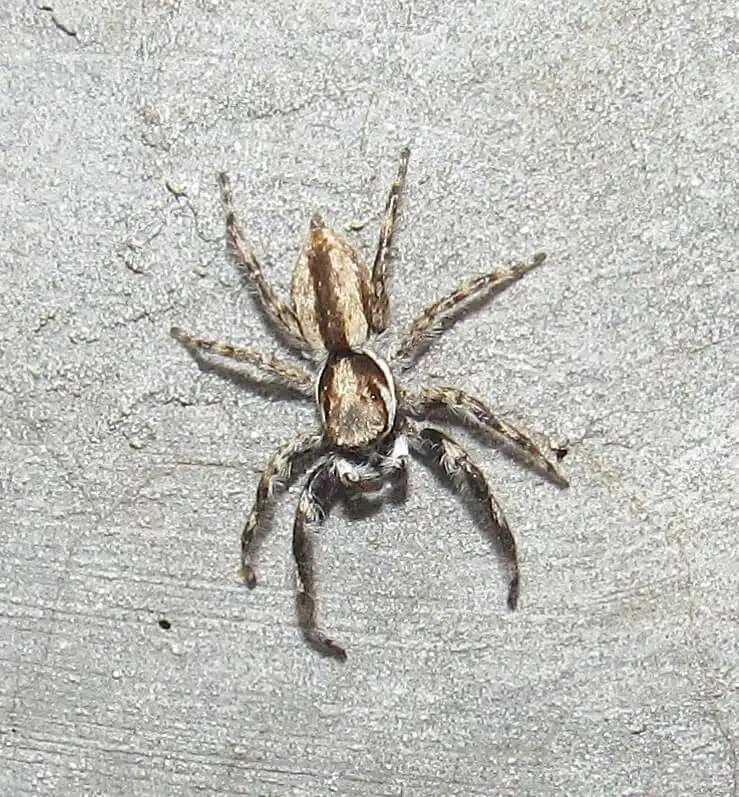
One of the most common types of gray spiders in homes or around homes is The Gray Wall Jumping Spider (Menemerus bivittatus).
This is a species that doesn’t build a spider web but which relies on actively pursuing prey for feeding.
Male Gray Wall Jumping Spiders are mostly gray while females are mostly cream or tan.
The male spider has a gray base coloring with large black stripes across its body. The legs of this species show a combination of gray and black banding.
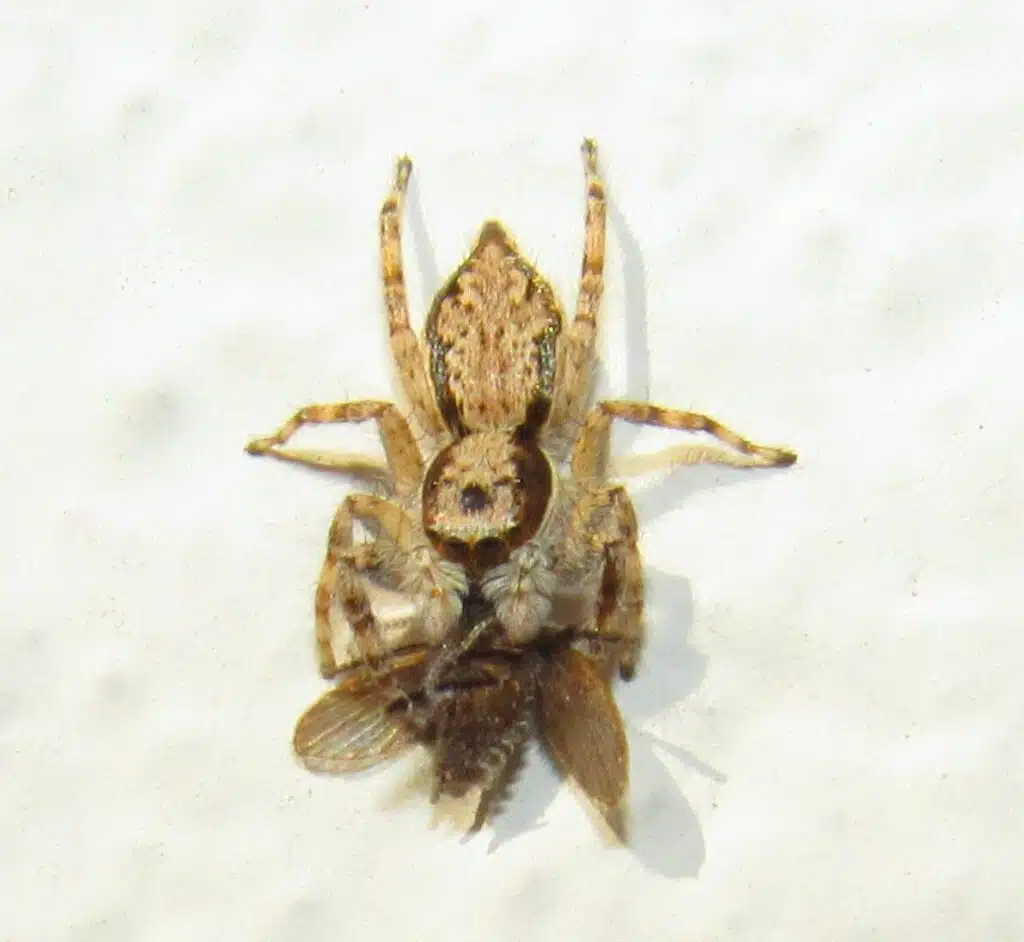
Spiders of this genus have a hairy appearance and may grow to a size of around 9mm.
They can be spotted on the outer walls of homes where they pursue insects. Spiders of this genus can also be seen on trees, where a gray appearance helps them camouflage themselves in plain sight on the bark.
An African native, The Gray Wall Jumping Spider can be found in Florida and Texas as an introduced species.
2. Grayish Jumping Spider
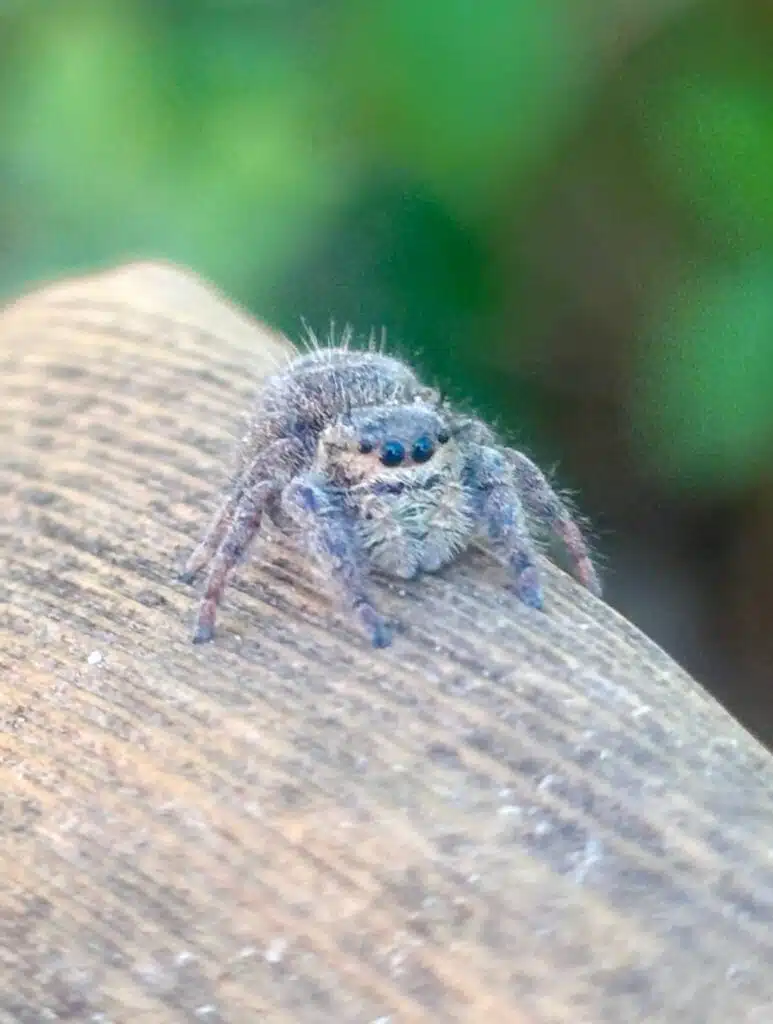
A type of spider that jumps, The Grayish Jumping Spider (Phidippus princeps) is also differentiated by color when it comes to males and females.
It’s the female spider that has gray mottling with brown nuances across the body and legs.
Male spiders are black with orange-brown abdomen markings.
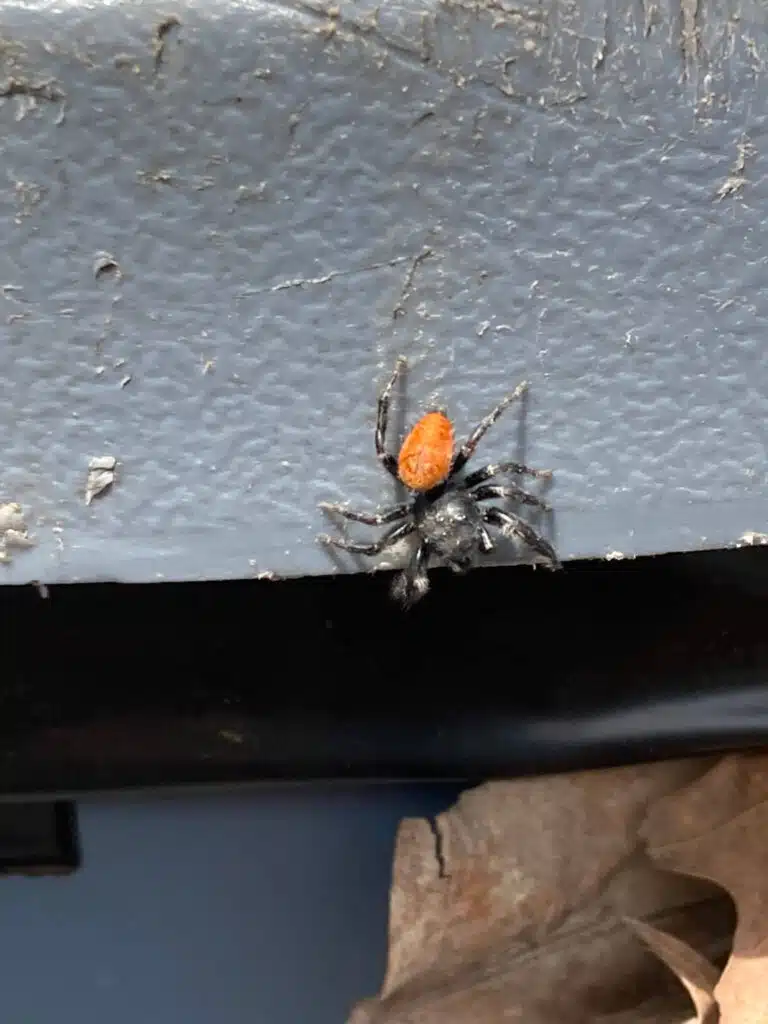
As its name implies, this is a species that pounces on small prey such as insects and even other smaller spiders.
Its strong legs act as springs that propel it forward.
These types of jumping spiders have an excellent vision they rely on for spotting prey.
3. Half-edged Wall Jumping Spider
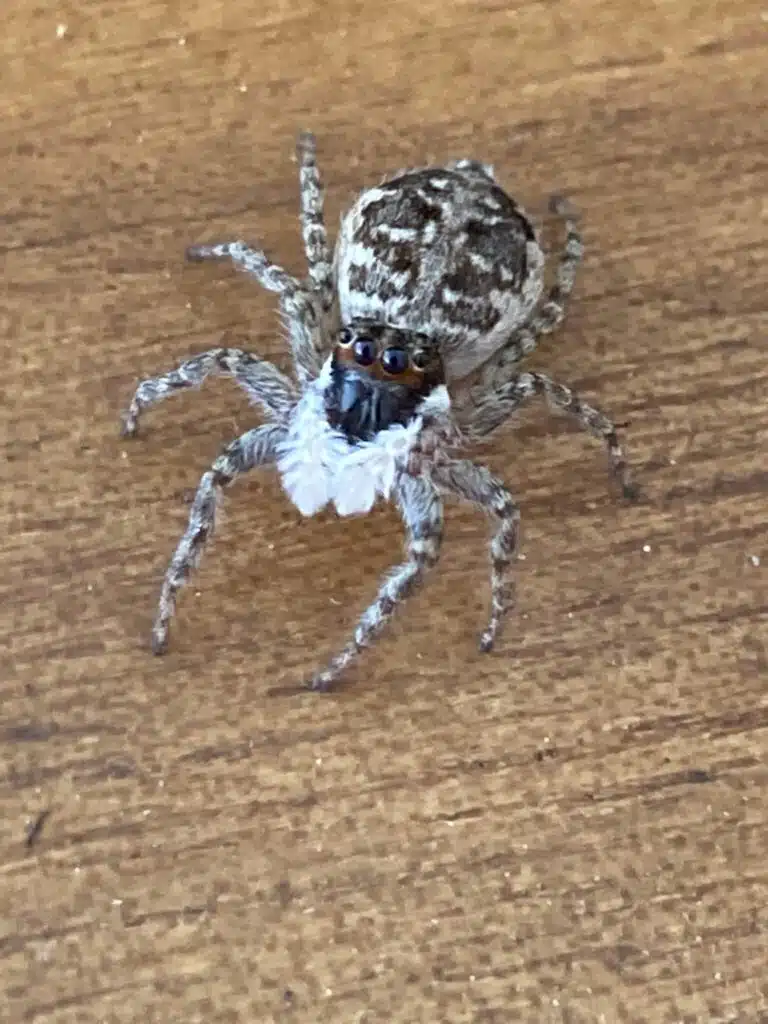
Half-edged Wall Jumping Spiders (Menemerus semilimbatus) are among the gray spiders that only live close to human settlements.
These types of spiders may live in urban areas, suburban areas, gardens, and inside homes. They never live too far out from inhabited areas.
A hairy body is specific to this spider. The abdomen of the species has dark and light gray mottling.
The legs of the spider show black and gray banding.
Growing to a maximum size of 0.3 inches, The Hald-edged Wall Jumping Spider is a small species that may be spotted on the outer walls of homes.
It may wait next to a light bulb for insects attracted to light.
4. Grey House Spider
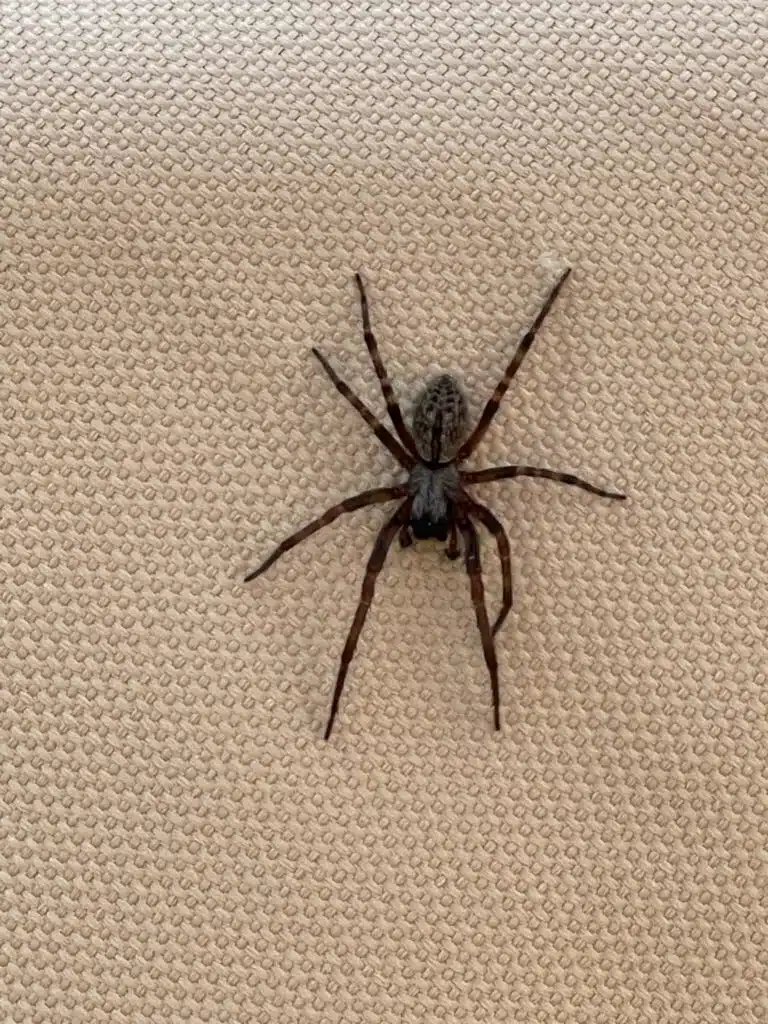
This type of gray spider (Badumna longinqua) is a common sight around the house. It represents one of the most common types of gray spiders that live in areas with humans and which also spin spider webs.
The body of the species shows gray and black hairs with scarce white hairs along its abdomen.
Mottled gray and black colors are seen around its head. Brown represents the main color of its legs.
As a larger type of indoor spider that builds webs, Grey House Spiders are known for eating small and large insects.
They can trap and eat different species of ants, flies, and even cicadas.
You can find these types of spiders around the house, basement, or garage. Secluded places such as corners are preferred.
These are the places where females build spider webs.
Emerging spiderlings look exactly like adult Grey House Spiders, but smaller.
These spiderlings do not live together with adult spiders and eventually move out on their own.
Newly-emerged spiders can use techniques such as ballooning to move away from the wind.
5. Grey Cross Spider
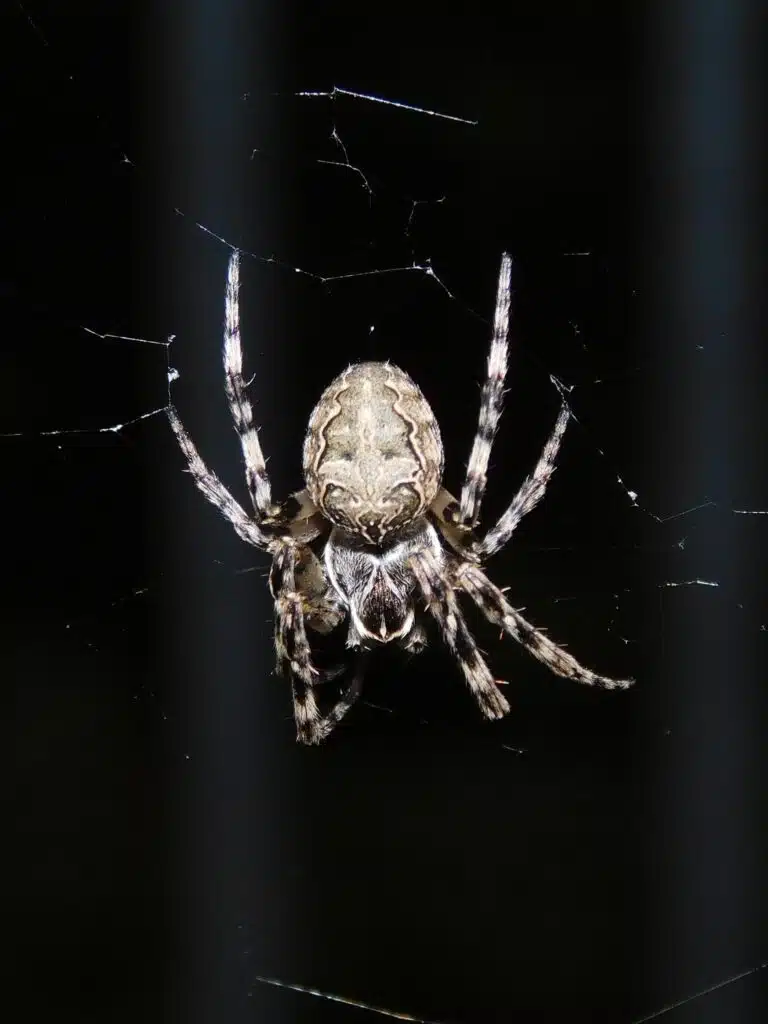
These types of spiders (Larinioides sclopetarius) are found around Europe, and on the US East and West Coasts along with the Southern states.
The mottled gray coloring is specific to these spiders. Males have a dark gray color on a gray base color. The head and legs of these spiders are also gray.
Larger females are partly red and partly brown. Females can be twice as larger as males. Grey Cross Spiders mostly live in human settlements.
They inhabit homes, public urban areas, and different types of abandoned buildings.
The source of light attracts these types of spiders and their prey at night. They can often be found next to public lights which attract flies and mosquitoes on summer nights.
Females of this species are known to build spider webs while males are often found nearby. Territorial habits are specific to the Grey Cross Spider male.
Aggressive behavior of females towards males is also seen in this species. Males may attempt to make their way on the female’s web to live and mate.
Some males are accepted on the web while others aren’t.
Research also shows juvenile Grey Cross Spiders also build spider webs. These webs are typically smaller and they are useful in catching smaller insects such as ants.
Juveniles may take a long time to mature when there’s no food around.
The end of the fall also marks the period when these spiders die in cold weather.
6. Chiricahuan Gray Tarantula
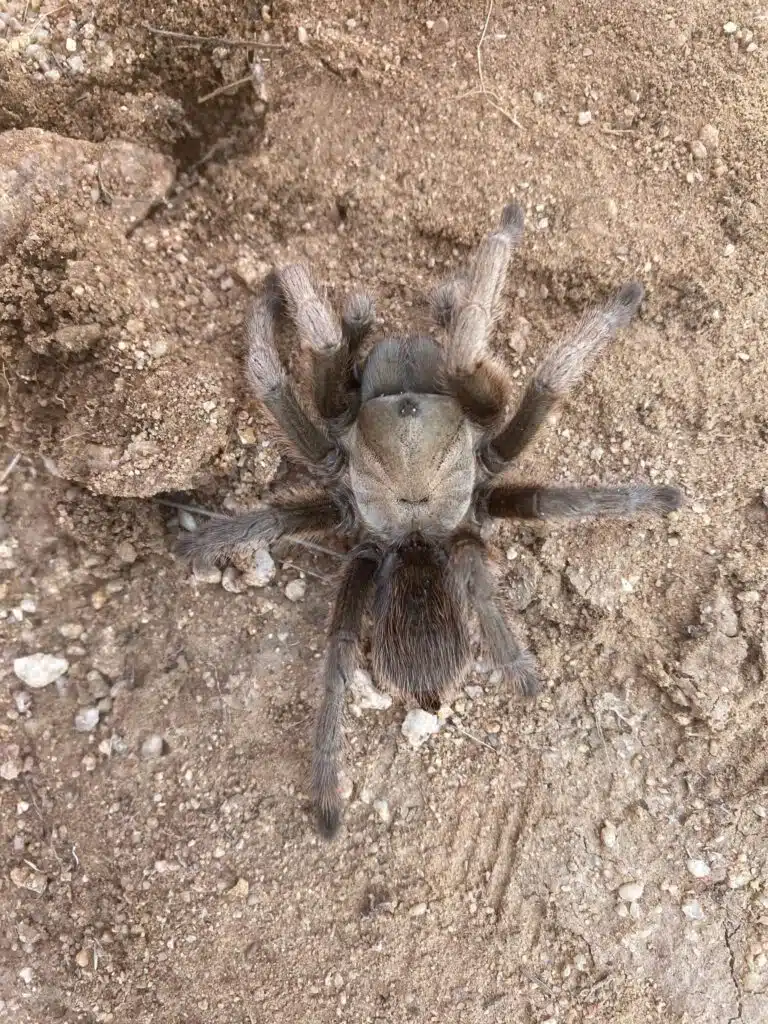
Oak woodlands, grassland prairies, and even arid areas are all within the distribution area of the Chiricahuan Gray Tarantula (Aphonopelma gabeli).
This species is only found in Southern Arizona and Mexico.
It comes in variable colors depending on its gender as males and females have different appearances.
This hairy tarantula has a black base color in the case of females.
Males are partly gray and partly black, with additional brown or orange hairs on the tip of their abdomen.
Female Chiricahuan Gray Tarantulas have a uniform black color while males are always multicolored.
Even the legs of males are mostly gray and black only towards the body.
Named after the Chiricahua Mountains, this species of tarantula typically hide in burrows or under wood or rocks.
They rely on patience for flies and other bugs to cross their paths before pouncing on the prey.
A species native to Arizona’s mountains in the South, this type of tarantula looks similar at all life stages.
Newly-emerged Chiricahuan Gray Tarantulas move out on their own. They settle in uninhabited burrows.
7. Phidippus octopunctatus
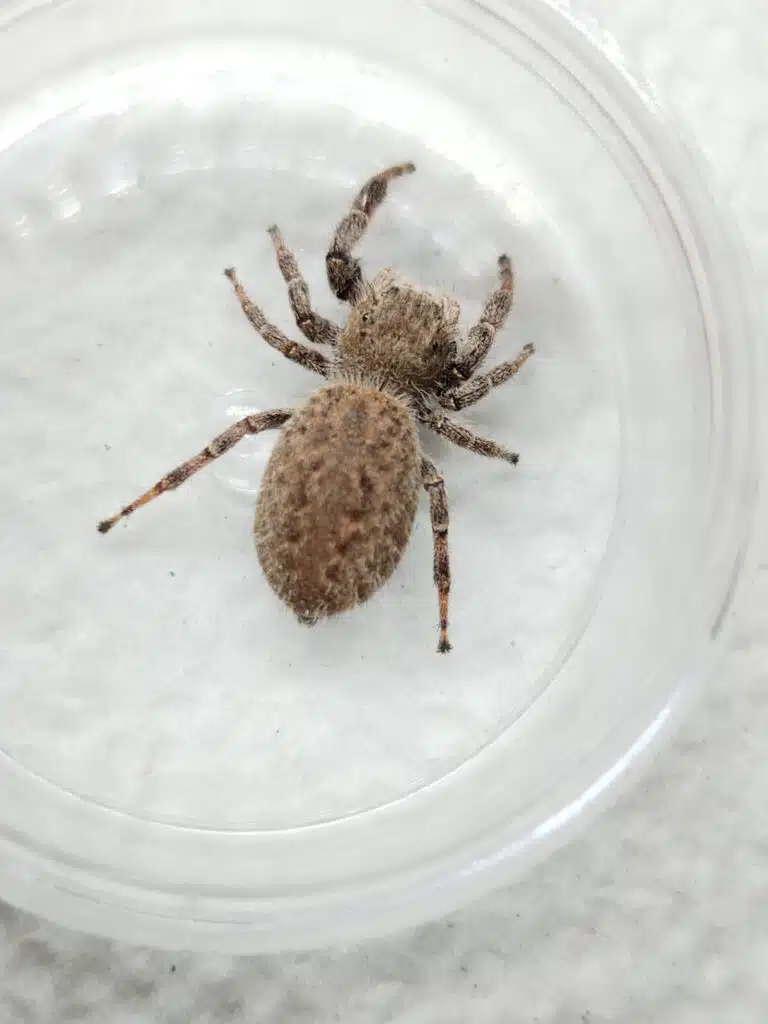
Found in the extreme South, this spider species has a mostly gray body. Its legs are black with scarce gray hairs.
This is a species that grows to almost 1 inch and which is also characterized by size differences between males and females.
Smaller males have larger gray areas across the body and even around the head.
Spiders of this genus are found in arid areas where they seek out bushes, plants, wildflowers, or trees to build nests around.
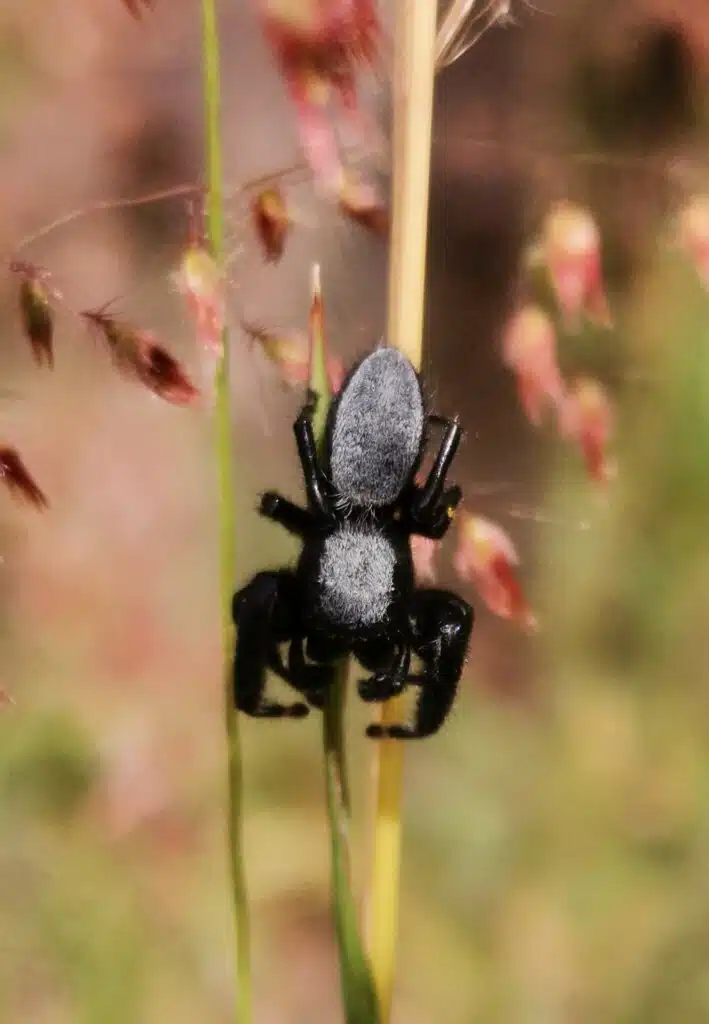
The diet of these spiders depends on their location.
Bugs such as grasshoppers are among their common prey. Flies and mosquitoes are also on their list, especially around water sources.
They prefer shaded areas to hide in during the day.
Phidippus octopunctatus is a short-lived species. It only remains active until the end of the summer.
8. Grey Huntsman
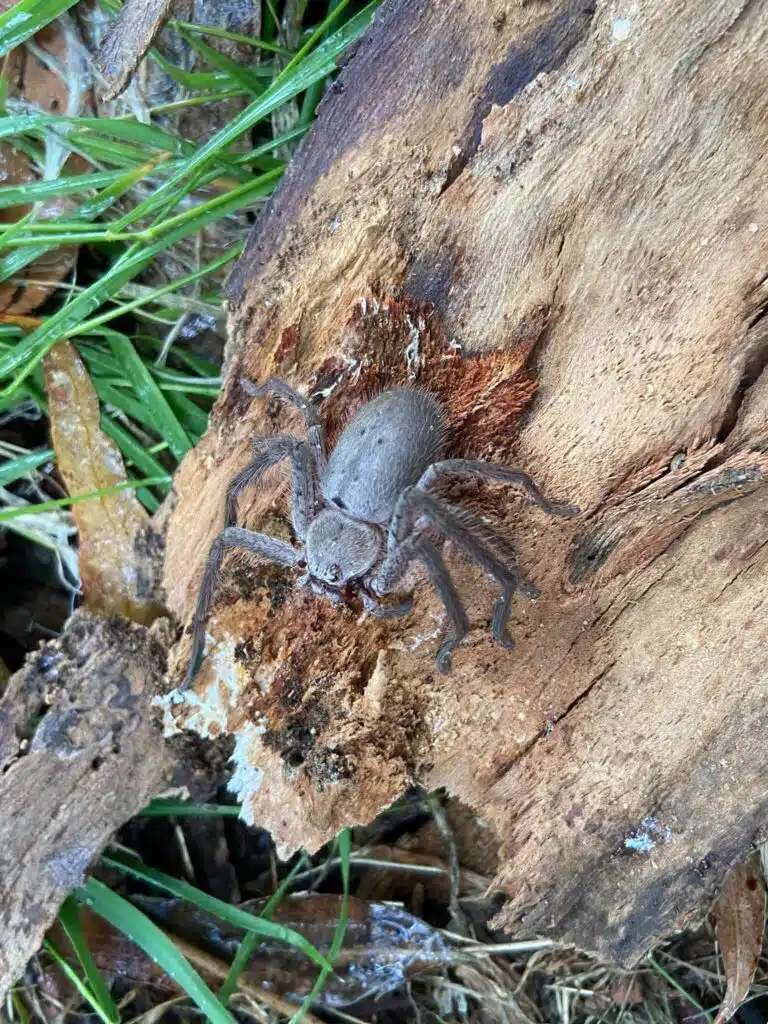
Grey Huntsman (Isopeda villosa) are Australian natives. As their name implies, these types of spiders have a gray base color.
The gray coloring of the species is almost uniform across the body and the legs.
Some spiders are light gray while others are darker. A couple of black spots can be seen just behind the head of these arachnids.
Grey Huntsman spiders are active hunters that live in trees, hollow wood, under rocks, or in crevices.
They do not build any spider webs and they represent one of the typical species that hunt for prey.
Some large bugs such as crickets can be eaten by this species but the bulk of their diet is formed from small bugs that live in damp places such as woodlouse.
While the species is venomous, the venom of these spiders doesn’t affect people. Grey Huntsmen have been reported to bite. These spiders may bite as a reaction to being roughly handled.